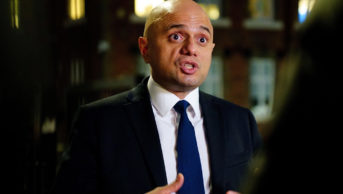
TEK Image / Science Photo Library
It is hard for those working in community pharmacy not to see red after reading the recent open letter to the Pharmaceutical Services Negotiating Committee (PSNC) — which represents NHS pharmacy contractors — from the Department of Health and NHS England. It revealed that funding for the sector in England in 2016–2017 is set to be cut from £2.8bn to £2.63bn, a reduction of £170m, which is more than 6%.
There has never been a cut in agreed funding since the introduction of the new contractual framework in 2005, let alone anything of this scale.
Unsurprisingly, pharmacy organisations have criticised the announcement. The recipients of the letter, the PSNC, labelled it “a damaging move” and “a destructive blow to the support community pharmacies can offer to patients and the public”. The National Pharmacy Association, the trade association for community pharmacies, called the proposals “misinformed” and accused the Department of Health and NHS England of using a questionable evidence base and giving an unbalanced opinion. The Royal Pharmaceutical Society’s English Pharmacy Board described the cuts as “shortsighted” and said there was cause for concern about the future of the profession.
The cuts are potentially damaging for community pharmacy, but they were not unexpected. The NHS ‘Five year forward view’, published in October 2014, described the need for greater efficiency and productivity, while in the November 2015 spending review, the government said it expects £22bn of efficiencies to be made within the NHS by 2020–2021. As a result, according to the Department of Health and NHS England in the letter, “community pharmacy is a core part of NHS primary care” and it has “an important contribution to make” as the NHS continues to face financial challenges.
There is a faint silver lining. The Department of Health will consult on how to introduce a “pharmacy integration fund” to help change how community pharmacy and pharmacists operate within the NHS. This is on the back of a recent initiative to employ pharmacists in GP practices. The fund is expected to be around £20m for 2016–2017, but it is unknown how much of this funding will go to community pharmacies.
The Department of Health will also consult on the launch of a pharmacy access scheme, which would provide more NHS funds to certain pharmacies, considering factors such as location and the health needs of the population. But given the scrapping of the essential small pharmacy scheme in 2015, which was introduced in 2006 to provide additional funding to pharmacies that would be unviable without financial support, this seems to be a case of reinventing the wheel.
December has always been one of the busiest months for community pharmacists. Many pharmacists and pharmacy staff would have been organising patients’ repeat prescriptions to ensure they do not run out during the holiday period. Others would have been managing the increased volume of dispensing that happens as a result of patients travelling. Therefore, the letter could not have come at a worse time. It does nothing to boost morale for pharmacists and contractors working tirelessly for patients and their communities, and many will now be anxious about how the cuts will be implemented.
Community pharmacy already operates under a strong business model, so it is hard to see where such efficiency savings could come from, apart from staff reduction, which could have a negative impact on safety and user satisfaction. It is hard to see the rationale behind the Department of Health and NHS England’s proposed cuts to an already efficient profession.
Given that this is likely to be the beginning of a series of efficiency savings by the government for years to come, pharmacy professional bodies must grasp the opportunity to limit the damage and make their — and their members’ — voices heard by theDepartment of Health during the consultation period, which is expected to close on 24 March 2016.


